JEAN-MARIE HORVAT: TEDDY RILEY, RULE-BREAKING, AND WHY ‘CHAOS IS THE BEST RECIPE’

Five-times Grammy nominated, multi-platinum mixer, writer and producer Jean-Marie Horvat has worked with some of the biggest names in music, from Destiny’s Child and Beyoncé, to Michael Jackson, Justin Timberlake and The Weeknd. Headliner joins him for a chat about his journey from growing up in the projects of New York to garnering a glittering studio career, as well as the pivotal role Augspurger®Monitors have played in shaping his craft…
We’re barely five minutes into our Zoom call when it becomes clear that it would take not hours or days, but weeks to fully dissect the life and career of Jean-Marie Horvat. Impressive as his CV may be, it barely scrapes the veneer of the story that lies beneath. If any mixer’s life story warrants a feature length screenplay, it’s his.
For the past 30 years he has been applying his signature touch to a vast array of definitive records for the likes of, in addition the names mentioned above, Jessie J, Chris Brown, Ty Dolla $ign, J Lo, Rae Sremmurd, Robin Thicke, and more. Yet, despite his reputation as one of the most sought-after mixers of hip-hop and R&B, his roots lie very much in rock. This, he informs us before we dig into his career in earnest, is something he is relishing returning to at present.
“Recently I’ve been going back to where I started,” he says. “I went on to work in hip-hop and R&B for most of my career, but I love doing indie stuff. I’ve been getting back into rock because I didn’t like where hip-hop is heading - more the trap stuff - because everything sounds redundant. I’m a musician first and a technician last, so I’ve been revisiting how I got involved in music - that was the bedroom and the house for me. Everybody says you have to be in a controlled environment, but chaos is the greatest recipe of an amazing song. The imperfections make it perfect.
“I’ve been doing a lot of Coco Jones stuff and I’ve been working with a new kid called London Cheshire with [producer] Barry Hankerson. And I’ve been doing some other rock projects I can’t talk about just yet.”
From second one of our time together - a couple of hours that feel like minutes – Horvat’s natural skills as a raconteur are immediately apparent. His rich New York accent and the cadence of his speech make him an engaging and entertaining storyteller, while the candid and colourful language he employs in conversation is frequently hilarious. As he goes on to explain, many of the most pivotal moments of his career have been the result of a series of happy accidents or a flat-out refusal to follow the established order. So, when did his life in music first begin?
“I can tell you right now,” he interjects mid-question. “I was six or seven and I was watching Sesame Street and Stevie Wonder came on and did Superstition. And seeing KISS for the first time. I remember seeing them, and Toto, and my brother was a major contributor to my musical taste. I remember him bringing home KISS’s Alive for me. And I started delving into his music and got into Steely Dan and the Eagles.
“Then what got me into playing guitar was Ace Frehley. My brother bought me an acoustic guitar and I was just mimicking him at the start. And going to record stores and being a fanboy is what got me into music at the start.
“But I also grew up in the projects, so the streets were another form of education for me. I was listening to a lot of R&B and soul, and that combination is what led me to work with Teddy Riley.”
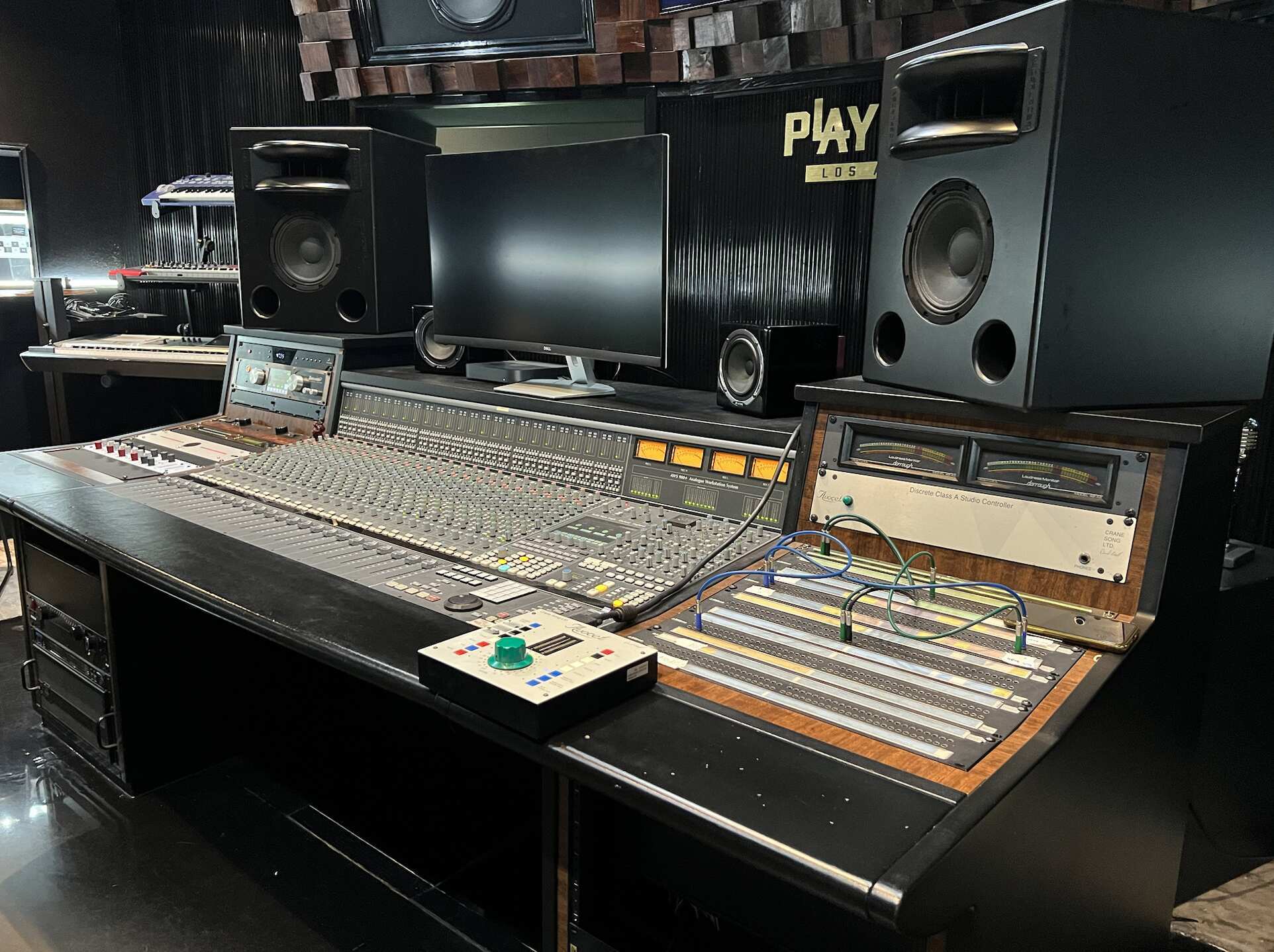
A lot of people go by rules… I broke every goddamn one of them.
Jean-Marie Horvat
During those formative teenage years, Horvat could hardly have predicted that he would soon be working alongside one of the most influential producers of the era. As well as co-founding and fronting the band Blackstreet, Riley is also credited with creating new jack swing, a genre of music blending hip-hop, soul and R&B. With Riley, Horvat would go on to achieve major success with some of the biggest artists on the planet, among them, Michael Jackson and his 1991 album Dangerous.
However, with his parents eager for their young son to, “get a real job”, a career of any kind in music wasn’t on the cards. Still, with no thought for anything else, a course at the legendary Institute of Audio Research allowed him to open doors that would soon set in motion several sliding doors moments that would shape the rest of his life.
“I was doing a lot of odd jobs, and to pay for college I became an investigator for Hudson County, so I was a cop first,” he recalls. “But after a while I just didn’t want to do it no more, and I told my guitar teacher and he said why don’t I become a producer? So, I went to school at the Institute of Audio Research.
“I also took an internship at Sigma Sound Studios, and I remember I was wearing this Hawaiian shirt, and the lady hiring said, I’m hiring you just because of that shirt! I got hired that day and she asked if I could work that night, I said yes. That was 1990. I was doing the phones and on my first night I met Ziggy Marley, then Steve Thompson and Michael Barbiero - the legendary duo that did Appetite for Destruction and Master of Puppets. Then Raquel Welch comes in... after that I never got starstruck again!”
Not content with merely answering the phones and keen to get to grips with the studio environment first-hand, after a couple of weeks Horvat decided to take matters into his own hands.
“I was very boisterous and anyone who knows me knows I don’t give a rat’s ass about anything, I just love to live,” he says with glee. “I’d heard about this guy called Tony Maserati [producer and engineer, Mary J. Blige, Notorious B.I.G] who would become my mentor, and one day I said, ‘if his name is Tony Maserati then I’m Johnny Ferrari…’ not knowing that he was right down the way. He was like, ‘hey, you’re really funny!’ He took a liking to me. In October that year he didn’t like his assistant so he took me in instead, and said don’t touch anything. And I touched everything just to bust balls!”
It was through his work with Maserati that he came into contact with Riley. The encounter would prove life changing.
“About two weeks later I’m playing guitar while serving as an assistant on a session, just three months into my career, and I meet Teddy Riley,” he picks up the story. “I knew who he was, but I didn’t know he was Teddy Riley. He was playing the Hammond, I’m playing guitar, and I’m like, ‘you’re a bad motherfucker, man,’ and Tony goes, ‘don’t you know who the hell that is?’ I say yeah, some guy named Teddy. He says, ‘you dumbass, that’s Teddy Riley!’.
“But Teddy took a liking to me, but what I didn’t know was that he thought I was an engineer. I was doing a practice session and Teddy comes in and says they want me in one of the studios, when I was just a runner. Teddy hits play and I’m like, ‘oh shit I’m in trouble’. He says, ‘you hear those drums? That’s how I want my drums to sound’. And walks out. I had no idea what was going on. I’d just started a few months ago when I didn’t even know what an SSL board was, and now I’m engineering the Let’s Chill session from the New Jack Swing soundtrack. I was so nervous, but I did OK.”
Though his accidental stint as an engineer for Riley proved successful, nothing could have prepared him for what came next.
“Soon after, Teddy left and I didn’t see him for a while,” he says. “I hear through the grapevine that he’s got the new Michael Jackson record and moved to California. Then we move into May 1991, a year to the day that I started working there, and the studio manager calls me to say Teddy is coming back and he wants you to engineer a session. I’m scared. Then all of a sudden Teddy’s tech comes in and goes, ‘you Jean-Marie?’ I say, ‘yeah’. He says, ‘you like working here?’ I say, ‘yeah’. He goes, ‘you know why I’m here, right? Teddy wants me to pick you up and wants you to work for him’. That’s how my career started.”
The element of chance that brought Horvat into the orbit of the likes of Maserati, Riley, and Jackson, almost transpired to drop him altogether. After arriving in California from New York, news quickly filters through that his services will not be required on the sessions that would spawn Dangerous.
“I wasn’t supposed to be on that record,” he states with a smile. “Teddy started working at 10am on Michael Jackson stuff and told me they didn’t need any more engineers, and that I’d be Teddy’s tech. I came in the next day and what I’d usually do is make a slave reel. As I'm doing it René Moore comes in and asks who I am. I say I’m Teddy’s guy and I’m doing a slave reel and mixing it. He says, ‘let me hear it’. I hit play and he goes running out. I’m like, shit! Now I’m going to get fired.
"He comes back in, Thom Russo comes in, and Michael came in afterwards, and the song was Jam. I thought I was in trouble, but I see Teddy is smiling. Russo goes, ‘let me hear the mix’. I say it isn’t the mix but he wants to hear it. He hears the bass and goes, ‘oh my God’. The next thing I know, they say, give him all the tapes! To a musician who doesn’t know what the hell he's doing! That’s how I got on it. It was the most amazing experience I had. We were a bunch of renegades, and the music industry was actually interesting. There were so many great artists being individuals.”
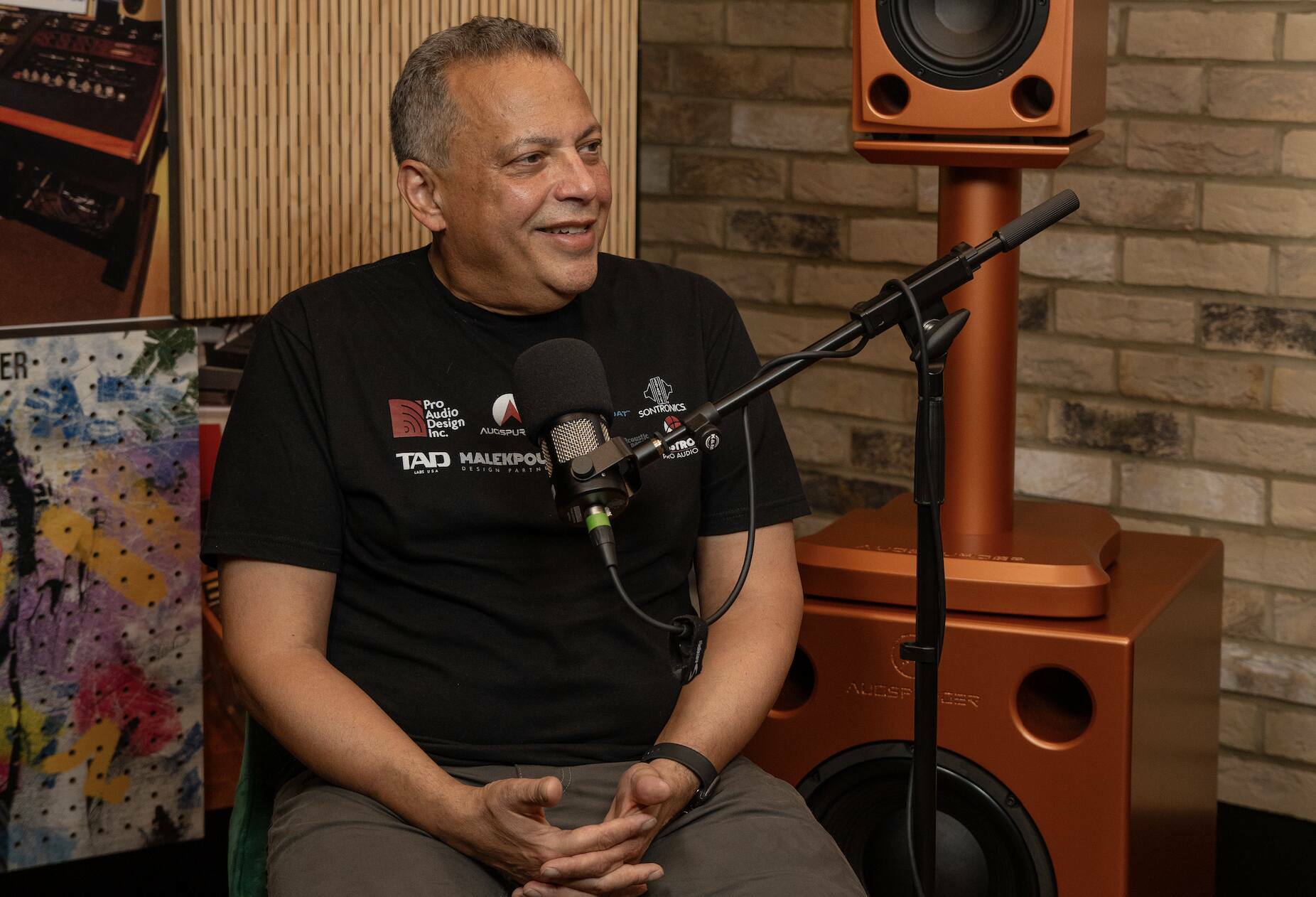
The Solo 8 is a magic weapon. Dave Malekpour made my perfect speaker.
Jean-Marie Horvat
While there has evidently been a lot of being in the right place at the right time in Horvat’s career, surely there is more than just blind luck in how he got off the ground?
“I think I hear music and monitor things very definitely,” he ponders. “I have a heavy hand, I don’t give a flying fuck what the meters are telling me. I believe in different perceptions. I am a student of tones. I was doing the Ty Dolla $ign albums and I said I want my drums to hit like Dre but I want the music to feel like Pink Floyd. A lot of people go by rules… I broke every goddamn one of them.”
It was during this time that Horvat came into contact with Augspurger® Monitors and its owner Dave Malekpour. Hailed for their high-end clarity and powerful bass, Augspurger® Monitors have become the go-to brand for some of the biggest acts on earth. From Dr Dre to Jay-Z and a great many more, the fingerprint the brand has left on hip-hop and R&B is indelible.
“I come to L.A. and I hear these speakers and I’m like, what in god’s name is this,” he says. “From then I couldn’t work in a studio that didn’t have them. They played a major part in how I work. They are an amazing tool. As a musician it’s about what you feel. And those Augspurgers give you what you feel and I’m blessed to have a pair. My relationship with Dave Malekpour has been great for over 30 years. His redesign of that brand is probably the best I’ve ever heard.
“I built a studio and needed a big pair of monitors,” he continues. “So Dave visits me and says he wasn’t sure he had anything for me because I was working in such a small room. Anyway, right before NAMM that year, he said, ‘come to NAMM, I have a surprise for you’. He had made me a pair of baby Augspurgers! They were Solo 8s with two 18” subs, and when I tell you those motherfuckers hit, boy! I had everybody jealous of my room. Everything in that room was focused, hitting hard. The Solo 8 is a magic weapon. He made my perfect speaker.”
To this day, Horvat remains an Augspurger® disciple, and will consider nothing less. As he puts it, “there is nothing else like them”. And they’ve served him well, shaping his towering body of work and all the accolades that have followed. Conscious that we are about to wrap up, he’s keen to pay tribute to Malekpour not only as an audio expert, but as a person who can relate to artists and audio professionals like no other.
“He’s from the east coast, and he’s a no bullshit type of person, which a lot of the hip-hop clients really like,” he closes. “But he’s also a great businessman. And he cares about what you like and he doesn’t stop perfecting. That’s what professionals love. But I’m also a street kid and he knows how to relate to street people because of where he grew up. And he’s a musician. People love him because he cares. He comes up with great concepts and that’s how he created this monitoring system. And he helped me out when times were tough. He’s a wonderful human being.”
With a host of projects underway that he can’t yet discuss, we eventually call time on our conversation. Wherever he focuses his attention next, be it in rock, hip-hop, or elsewhere, there will be no shortage of stories to tell. To quote the man himself, chaos is the best recipe. And with a life story and CV like his, who would have it any other way?
You can read Headliner's interview with Malekpour on how he and his products have shaped the sound of hip-hop here, or you can watch it in full below.
View full article: [https://headlinermagazine.net/jean-marie-horvat-teddy-riley-rule-breaking.html]
Pro Audio Design’s David Malekpour Looks to Translate Pro Studio Success into the Hi-Fi Market
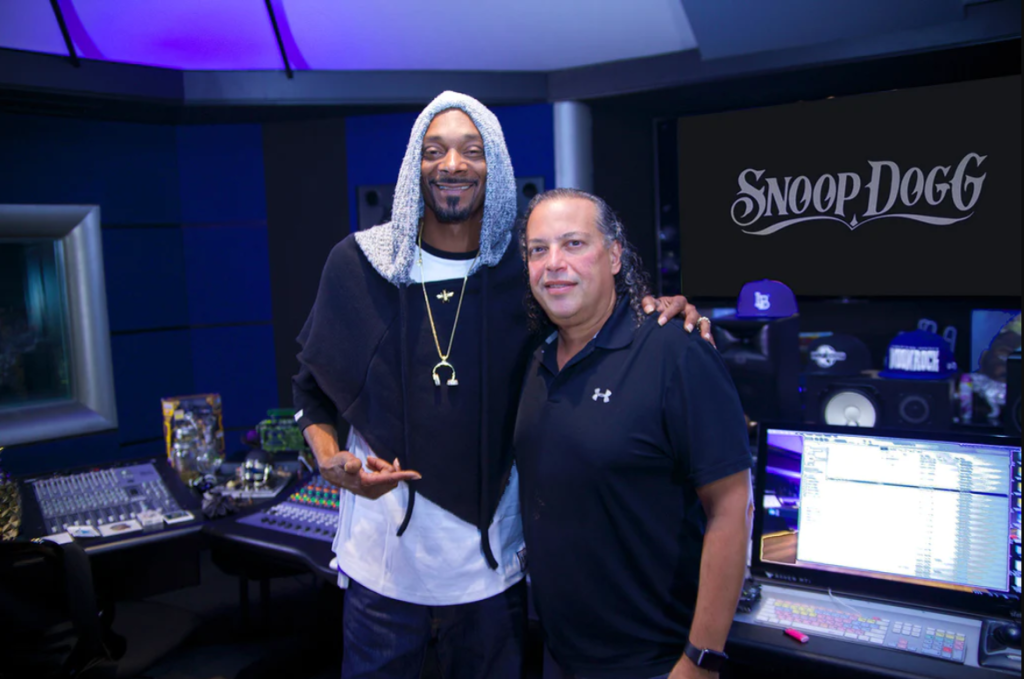
As a 36 year veteran of the professional music industry, founder and president of Professional Audio Design, Inc. David Malekpour has come a long way.
"I started working in pro audio for an acoustic designer and studio tech in 1986, then started my original venture, Anything Special, in 1989," he texts. "I renamed and focused in on pro in January 1993 as Professional Audio Design."
Since then, he's produced a plethora of custom studio recording studios for clients that include Snoop Dogg, Jay-Z, Alicia Keys, Wu Tang and other recording megastars. Based out of Hanover, Massachusetts, he runs a portfolio of five interrelated companies to service a gamut of the pro and home hi-fi markets with great fidelity.
I met David this past April at AXPONA (Audio Expo North America), which was held in the Renaissance Schaumburg Hotel and Convention Center in Schaumburg, IL. Reporting for Positive Feedback, I made the following observations of his room:
The Augspurger® SXE 3D 3-way DSP Networked amplifier ($4995) is driving the Augspurger® MX65 Monitors ($10,995) and the Augspurger® Sub 212 ($4250): 2000 watts feed into the sub channel, 600 to 800 watts in the mid channel, and 400 watts into the high horns.
As such, they are rich, full bodied and image surprisingly large. You can hear the grain in Leonard Kohen's sonorous bass vocals singing "Thousand Kisses," for example, which envelop the entire hotel room.
A Candid Observation and Uncut Interview
It's nearly four months later after that original listening session, and during our respective work commutes, I call Dave to advise him that I finally got around to transcribing our lengthy AXPONA interview and its release is eminent, but I need clarification on a few points and photos from his customized studio projects. During our conversation, he observes that in pro audio, people employ the least components necessary to get the job done while audiophiles have a tendency to go way over the top. "In pro audio, you use the minimum tools necessary to achieve a recording with great fidelity," he says, adding that a carpenter uses a saw to cut wood, but with audiophiles, there's a tendency to introduce way more into the chain than necessary to achieve accuracy as they seek to sweeten it to their tastes.
"They may use cables or tubes to sweeten the sound, whereas we may employ graphic equalizers in the studio," he says.
He recalls that one display room at AXPONA showcased a million dollars of equipment and amplification supplying signal to massive speakers with nine drivers each that filled the room with sound, but for all the flourish and bling, wasn't all that impressive.
What follows is a rare and uncut glimpse into the Pro Audio Design world of Dave Malepour.
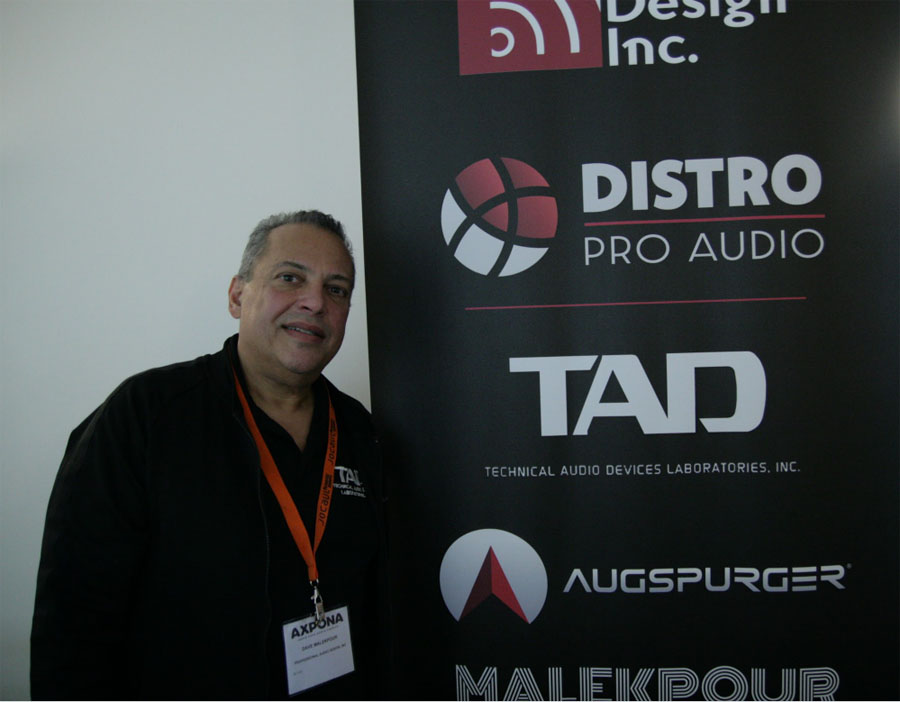
DAVID MALEKPOUR I started out originally as a musician, and became a recording engineer in my 20s. And working in a studio, I met a guy who came to fix the studio, and it turned out that he had designed it, and he was an acoustician, and by the end of the night, he'd offered me a job selling the services of his company. It was a real turn on for me because I got to start seeing how studios were created from the inside out, as opposed from a planning, architectural and acoustical viewpoint. That was about 1985.
I worked for him for a few years and decided to start my own business in March of 1989. And combining what I learned from him in design, but also integrating the equipment because, for me, a holistic picture was equipment and the room—not just the room, not just the equipment, but a combination of those two things. So we started off by helping people design their studios, equip them, and it really led me down this great path.
Dynau-mite!
And in 1993, I found this speaker called Dynaudio. They had a pro version called Dynaudio Acoustics, and I was at Happy Roads New Years in London, and I was like, "wow, this thing sounds really incredible," and it led me on this journey. I ended up being their first distributor in the world in 1993. I brought it to the U.S. and we brought it to studios, and started learning how to tune speakers because they had some really big speakers that used adjustable crossovers. EQ them and we could tune the room, and it was like, "Oh," now we could make it a reference point that we could repeat room to room, to room.

An Augsp-icious Start
Along the way, a customer asked me to build him a pair of Augspurger® monitors, which was something you could get a design for that you have to build it yourself like a DIY thing. And he said, "Dave, with your ears and the way you tune speakers, if you had this, this might be a great business for you. But I want to get a pair of them, but there's no companies; you'll have to make them yourself."
So, I went out and I built that first pair of Augspurgers®. I guess it was 97 or 98, and that led suddenly to the next studio wanted them, and the next studio wanted them. And Jay-Z put them in 98 or so, and things started to really blow up with that monitor, and next thing you know, I had 35 pairs of big Augspurger® monitors in the top studios of New York. And I realized then that it was no longer a side project and this had to become something more important to me.
We still were making them one here, one there, and by 2010, the Augspurger® brand became something really important to our business, and we launched it as its own company. We created our own amplifier and we had our own drivers made for us.
A TAD Special
When I first started making them, I had TAD components, which is a tie-in to our client life because we became the number one user of TAD drivers in America for our speakers, and flash forward to last year, TAD came to us and said, "Hey, would you take over the distribution of our pro products?" And that was a no-brainer.
On top of it, they said, "Well, we really want hi-fi to live with pro. Could you take on the hi-fi line?" And so that's sort of how we made the decision to delve into hi-fi with this great legacy brand, TAD, that is incredible.
And then after a couple hi-fi shows, I realized Augspurger®, the speakers that we're making, were also an interesting product that would also do well. It's a different flavor. You know, you walk around a hotel with 150 rooms, 150 different speakers, you realize that there's a place for everybody. So, we felt like a horn loaded, DSP controlled speaker could be interesting.
Holistically Passionate
From the starting point back in the late 80s to 90s, I've had this philosophy of looking at the whole thing, like what makes a great sounding room. The acoustics make a great sounding room, the speaker choices, the positioning—every little thing that goes into it. And because I'm a very passionate person, I think that appealed to artists, and producers, and people who are equally passionate about their music. And so that gave us a really special in in the studio world. And today we have over a thousand studios with Augspurger® monitors worldwide, and it seems to be growing because right now in the first quarter of the year, we had more than half of last year in orders in just the first quarter, so that's like a lot of rhythmic growth for us.
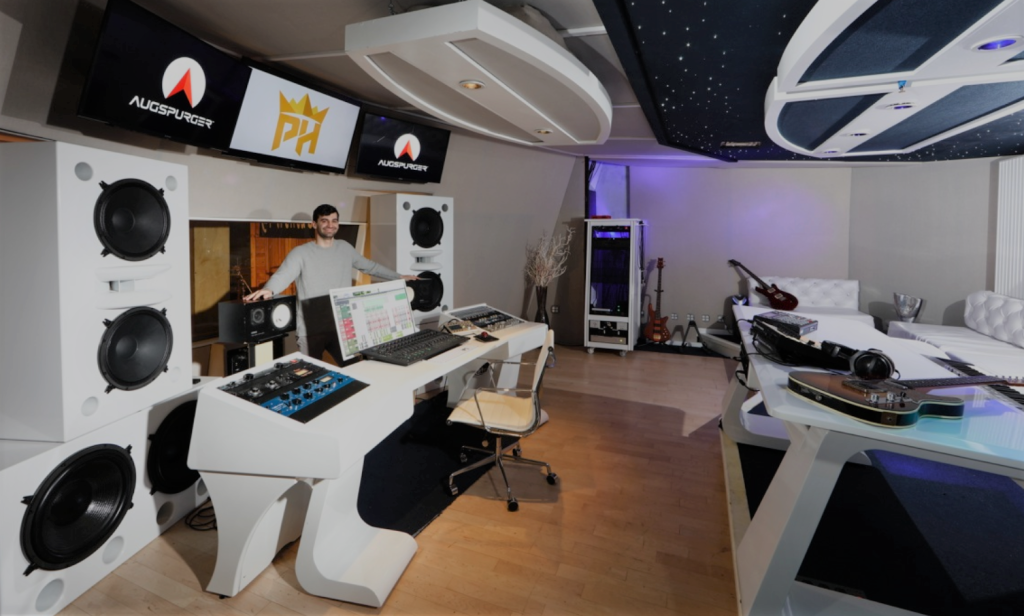
Strength in Diversity
So we have a number of different business units. We have professional audio design. That's our main core of fundamental business—and that's equipment, installation, and we take a design approach to the systems. From there, we ended up starting Malekpour Design Partners. That's my acoustics and architectural acoustics design company.
So we're designing whole, complete studios, and then broad design equips them with either Augspurger® monitors or whatever the client wants. We're dealers for hundreds of brands, but our approach is still the same, which is, it's a systematic approach. So sometimes people still pause and just buy a piece of equipment off a website or whatever, and in our highest position, we do that sometimes in our projects, and that's what we're focused on. (You can view a portfolio page of their studios HERE)
And I've also branched out into distribution of certain projects—JOKAVI acoustic panels, the TAD brand and Sontronics Microphones—you know, we just found really cool stuff that we love and wanted to be associated with and we wanted to bring to market. We have our hands in a lot of different areas. In fact, we have five separate business units total, but they work together. I like to think of us as modular companies, so someone might find us because of Malekpour Design Partners, or they may find us because of Pro Active Design, now today they may find us because of Pad HiFi Design, and with Pad Hi-Fi, our goal is to bring a lot of our knowledge from pro into the hi-fi world (view their site HERE).
You know, for example, today I just gave a panel for acoustics for a listening room either from the ground up, or correcting–there are so many people that need that help. And so Pad Hifi is going to focus on the distribution of TAD products, Auspurger Hi-Fi products, and the JOCAVI acoustic products focused at the hi-fi user.
JA Joe Cobbie?
DM JOCAVI is a Portuguese company. They make acoustic panels but they also have a predictive acoustics model basis, so let's say you have your room, and it's 12 feet by 16 feet with an eight foot ceiling, we could take those dimensions and with a predictive model and know what the room's going to do—the acoustic signature of the room—and we can then with all the products that they make, we have all those coefficients and can then place them into the room in the right way.
Making Beautiful Music with Aesthetics
And of course, there's an aesthetic component to that as well. We can pick woods, and colors and fabrics. Aesthetics are really important. It's how you get your vibe, feeling cool and relaxed—you know, for most people a listening room is a place where most people want to spend a lot of time. Not all of us have enough time. Maybe we work all day, we get an hour or two to listen to something and cool out, so you really want to be comfortable. And so, yeah, we're focused on that whole picture. Like what's the room going to sound like, and then choosing the right components is really important, as well.
Musical Yute
It's kind of where I come from and it all started from a passion for music and you know I've been a musician since I was five years old
JA What?
DM I'm a guitar player and a songwriter. I play a lot of other instruments to some degree—and usually just enough to write songs but the only thing I would perform on is guitar—and sing. In fact, I spent years of my life performing three to four nights a week even up to eight years ago.
Pick Two
I was on the road a lot and my wife said to me, "Hey! You've got a complicated business, you've got your family, and you've got this band. You might want to narrow that down to two."
So I kept my family and I kept my business. I had to move on from playing professionally, but it's still a passion. I play for the kids in the kitchen, you know when I get a few minutes. That's how I unwind. So if you can play golf, I'll play my guitar for the rest of my life.
I still wake up with songs in my mind and, unfortunately, they go to waste now because I can't turn them into recordings because I don't have the time.

Who You Know
I think you mentioned my history doing a studio for Snoop Dogg or Jay-Z. Today, we're finishing a project for Will I Am. And Puff Daddy—we have three rooms we're working on for him. All these really big mega stars, what happens is once one of them finds you—they're all friends (and)... .
"Well, Dave did my room."
"Oh, I need him to do my room!"
So Puff calls and says, "My friend so and so, London on the Track needs a room." And so we've just sort of gotten into this echelon of current Urban bliss and partly because the Augspurger® sound is so powerful and can produce low frequencies down to 20Hz very accurately, so they can get that really visceral, club kind of feeling but have it be very accurate to mix records.
The Right Sounding Stuff
The last thing in a recording studio you want is that the sound is in the speaker and not in the track, right? So what we're focused on is getting the most accuracy in a recording in line, and that translates now to the living room, so we can take that sound that we're having in the studio and that accuracy, and give the listener in a home environment that same experience that they have in the studio.
And sometimes in a home environment, we want it to be sweetening as opposed to revealing, but in a studio, we want to hear all the warts so we can get them out, right?
Home versus Studio Sound
In a home environment, we're not there to evaluate the recording, we're there to enjoy it. So then we can take that starting point of reference and decide if we want a little more bass, a little more highs, or cut out the mids to really make the room sparkle and shine for every type of music that they're listening to.
A lot of our work today is on predictive modeling of the room, putting the right equipment in there, and getting the experience to be something that can make your hair stand up. It's what we're after, right? We want to feel the music, hear it, have it touch us, and experience it the way the artist intended.
And that's one of the things with TAD that I love is they have this slogan—"The artistic intent intact"—and I think that says a lot because I think their speakers are also the most truth telling hi-fi speaker I've heard. They really translate from my experience in the studio to being what you can hear in your own room. It's an amazing product.
And the difference of Augspurger® and a lot of other products is that it's an active system, so the Augspurger® system has a DSP engine in there. So you don't just buy the speaker, you buy the speaker and it comes with an amplifier that allows us to tune the room using the DSP to share each side with the speakers.
Getting Consistent Curves
And when we're tuning a room, you set up the speakers with measurement equipment, and I'll run those measurements, and then I can adjust the system and really get it into shape in almost any way, so I can get the same exact curve in each room, which is really powerful. And especially because a lot of the people I work for are mix engineers that are mixing some of the greatest records of our time (you can view a video on this process HERE)
A lot of our clients are like, 'This guy has 50 number ones,' 'This guy's got 70 number ones! 'Ah, this guy's got 35 Grammys!' So, you know a guy like Rafa Sardina, who's got thirty-something Grammys, coming from World Music to jazz, to symphonic to hip-hop—you know, you look at his catalog and these are records we all know—he's mixing on our system in a room that we tuned. We have that empirical data.
So when I first started, I put up those measurements that I know are the measurements that are relating to those mix engineers, and that's the starting point that I try to get for our clients in their rooms. Whether they're a studio or a home, I think that's really valuable.
Staying Focused
I think we have a bunch of complicated bunch of different elements and really what we do now is make sure that we remain focused on the target: making great sounding rooms, bringing companies like TAD and Augspurger® to the market, so people can appreciate them. And just continuing our work to develop really great sounding spaces.
I'm plagued with a million ideas. It's my blessing and it's my curse. And fortunately having some success, I'm able to dabble and experiment and find different things that really work for us. And we're just refining; we're trying to become the best version of who we are.
Hiring Smarter
It's an old adage: surround yourself with people who are smarter and more experienced than yourself. I have an incredible team of people—we have 22 people to complete stuff in our different companies, and then a whole range of outside subcontractors and vendor providers that we partner with to provide our customers with a really high level of service.
Serve's Up
I think my biggest thing is always just trying to put myself in my client's shoes, like 'what would I want?' because I'm a music lover and I'm an engineer, and I want them to have the experience that I would want to have.
To me, we're in a time right now where there's the internet, you click the button and you buy, and people buy stuff and they don't even know what it's going to do in their environment. Where we're helping guide people on the right products for what they want to do, helping them create the room that they want to have, and that's my mission; just make things sound better.
When I was young, I told my mom that I wanted to have an impact on music with my guitar and my songs, and I didn't realize the impact that I was going to have on a much greater level to producers, to the listeners, to music appreciators and so forth. That's the mark I'm looking to make. Is really making the listening experience great whether home hi-fi, studio, or nightclub.
Predictably Adventurous
A lot of people don't realize when they walk into a room that everything around them is affecting what they hear, so we're really focused on trying to work on that stuff. You know it's an adventure, and every day is a learning experience and I think that's what I love the most is that everyday I get to learn something, I get to think of something, apply it to a project, see how it comes out and, because we have this great 30 some odd year experience and a great team, we're able to kind of know what the results are going to look like; we use predictive modeling for the acoustics, we do rendering for the visual.
Roc'in the Nation with Studio Level Listening Rooms
Like right now, we're working on ROC Nation Headquarters in New York; we're building three studios for them. We did five listening rooms for the record label. You know, and if you're an artist and you just recorded in their studio and you bring your record to the conference room, and it doesn't sound like it sounded in the studio, they may say, "Hey, keep going back to work!"
So, what we've done is we've provided those listening rooms with studio level acoustics and sound systems, and they have the same exact curve as the mix engineers and the artists have in their studio, so it translates for the listener. And now we're going to build new studios for them.
It's a really exciting project being able to help shape the environment where music is made and then also help shape where it's being listened to on the hi-fi side. So, that's my mission.
By Juan C. Ayllon
Arch Audio Records: The Premier Recording Studio & Production House in the Southeast
It’s no accident that when Sony Global was looking for a professional recording studio to record one of their artist, Arch Audio Records (“Arch Audio”) was their top choice. Arch Audio is not just known for the quality of their gear. They are also known for being able to produce and record commercially viable projects of all genres in a relaxing and creative environment.
From helping aspiring artists to create the perfect demo, to working on full projects with more established music industry icons such as Rock N’ Roll Hall of Fame Member Willie Kitchens, Arch Audio is no longer the best kept secret in a city that has been aptly nicknamed “Scenic City.”
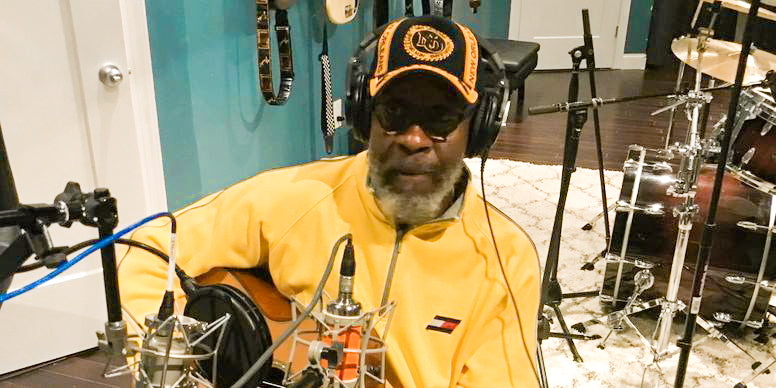
Based in Chattanooga, Tennessee, Arch Audio has established itself as one of the premiere recording studios in the Southeast. While cities like Chattanooga rarely have a professional recording facility of this caliber, the vision for Arch Audio was to provide artists with an opportunity to produce and record their records in a world-class recording studio without having to pay over-the-top prices.
At the center of the facility sits the Neve Genesys Black which is one of the most coveted consoles for professional recording studios worldwide. The quest to provide their clients with superior sound quality has catapulted Arch Audio into the same league as Capital Records and other premiere recording studios around the globe.

Apart from having a state-of-the-art recording console, Arch Audio has also assembled one of the most extensive pro-mic collections in the United States that can only usually be found in the larger high-profile studios in Nashville, Atlanta, New York, and Los Angeles. With their arsenal of top-line gear and an acoustically designed/tuned recording environment, Arch Audio checks all of the boxes for the discretionary recording artist looking to produce and record the highest quality of music possible.
At the helm of Arch Audio is owner/producer/engineer Mark Hutchinson. With over 33 years of audio engineering experience he operates a highly organized and polished operation that consistently provides Arch Audio clients with the most creative, soothing, and quality atmosphere to fully express themselves musically while capturing the highest commercially viable work product possible. Mark has expressed that the studio wouldn’t have achieved a high level of success if it wasn’t for the Arch Audio dream team, which is comprised of five of the most experienced audio engineers and producers that he could find in the region.
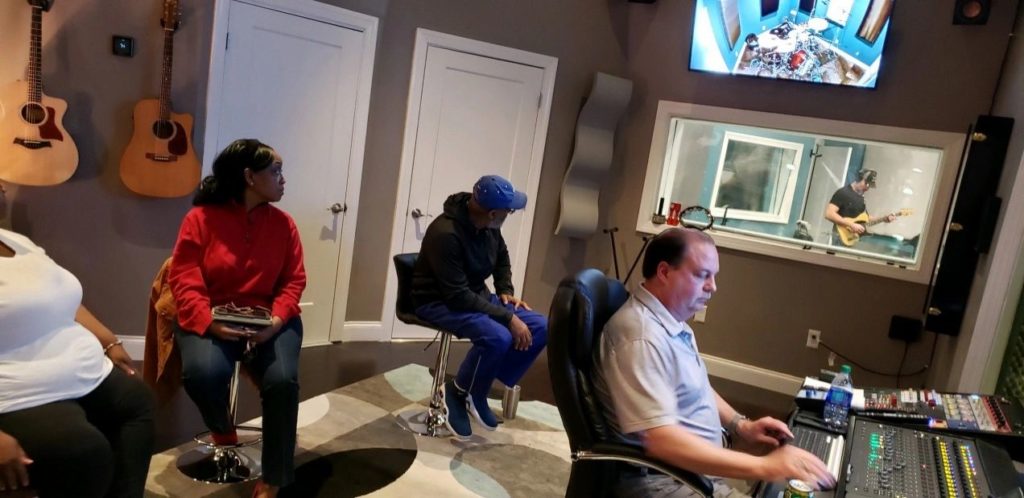
In addition to having best-in-class recording gear and staff, Arch Audio is equipped with the following rooms within their recording facility:
- Tracking Room A – spacious tracking room featuring a Yamaha C7 Concert Grand piano and multiple acoustic, electrical, and bass guitars for client use
- Tracking Room B – large room featuring a Hammond B3 Organ
- Tracking Room C – large live room used for practicing vocals and drums
- ISO Booth – specifically designed for recording vocals and amp isolations
- Control Room – spacious centralized control room which houses the Neve Genesys Black console
- Lounge/Green Room – a private, creative and inviting atmosphere for clients to write and relax
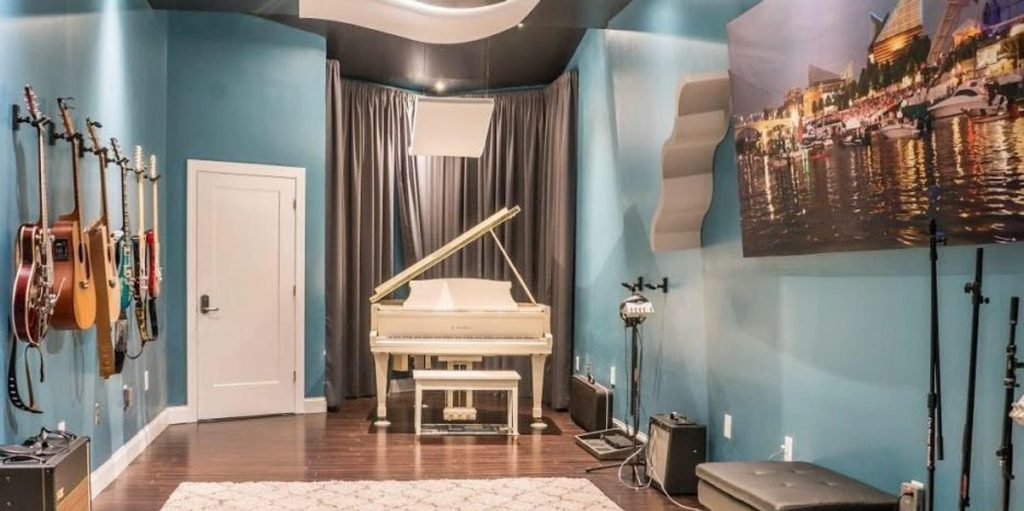
By incorporating world-class equipment and pushing beyond industry standards for commercially viable recordings, Arch Audio has consistently served its customers by providing them with the best sound and experience available in a professional recording studio. It’s no wonder that Arch Audio has quickly become a prominent name in the music industry. In fact, the the Arch Audio “experience” is so compelling, that the studio is being featured in an upcoming documentary.
You can learn more about Arch Audio by visiting their website or social media by clicking on the links below:
Website: www.archaudio.net
Instagram: https://www.instagram.com/archaudiorecords/
Facebook: https://www.facebook.com/archaudiorecords
Top Dawg Entertainment builds new studio complex
Top Dawg Entertainment builds new studio complex with the help of Pro Audio Design Inc & You’re Safe Here designer, Summer Walker
Boston, MA: Pro Audio Design Inc., the pro audio and acoustic treatment specialist, has recently completed an impressive new installation at Top Dawg Entertainment (TDE) in a unique collaboration with interior design specialist Summer Walker of design agency, You’re Safe Here.
Independent record label TDE, was founded in 2004 by CEO Anthony “Top Dawg” Tiffith – legendary executive and producer of Kendrick Lamar, SZA, and many other TDE artists who have collectively amassed a Pulitzer Prize, 16 GRAMMYs, an Oscar nomination and almost 30 platinum plaques, to name but a few.
Based in Carson, California, the original TDE studio, a one-room recording space at the back of Top Dawg’s house, provided a central hub for (at the time) developing artists Kendrick Lamar, Jay Rock, Ab-Soul, ScHoolboy Q and engineer MixedByAli, who spent innumerable hours listening to each other’s work, inspiring new creative ideas, and pushing their limits and abilities.
As the label grew, and success came in the form of hit records and a growing artist roster, the label outgrew the facility and many recording sessions had to be outsourced to various studios around LA, which spurred the decision to build the TDE studio complex.
“When going into this project, our goal was to re-establish the core essence of the original Carson studio by creating a communal space free from the pressures associated with traditional studio rentals,” recalls Keaton Smith, General Manager at TDE. “As we continue to expand the project, our aim is to create more opportunities for artists to come together and flourish.”

The core team working on the project included Pro Audio Design Inc, Summer Walker of You’re Safe Here interior design, Yuriy Sogomonov of TE Builders, Michael Bashkhangy, architectural designer for Malekpour Design Partners, and Luis Valdez of Jocavi Acoustics, overseen by Project Manager, David Anthony of Malekpour Design Partners.
“Being born & raised in Los Angeles, this project hit home for me in many ways,” remarks David Anthony. “TDE has been super inspirational to all Angelenos for over a decade, by keeping West Coast Hip-Hop on the map and giving artists hope that the Music Industry still has room for them.”
He continues, “Top (Anthony Tiffith) and his TDE team have made numerous positive contributions to the community and have always kept their ear to the streets to find the artists that reach the hearts of the listeners.”
Summer Walker, who was the creative lead on the project, also had a personal connection to the project, having previously worked on Top Dawg’s Beverley Hills home.
“TDE has been a staple in my passion for music, providing me some of my greatest moments in time through music and visual content. Being able to feed off that while working on this studio compound has really been a dream.”
For Walker, the project was more than just fulfilling a brief, “For me, as a black woman, to have a team of men who I highly respect give me that respect right back tenfold through this project, shows that the talent is not only there, but worth everyone’s time and mental focus. You know you’re in the right place and time when you feel creatively charged and trust implicitly in your team.”
Dave Malekpour, founder and president at Pro Audio Design Inc, praises the hard work of the design & build team, sharing his thoughts on the finished project.
“The facility has both incredible sounding rooms and is visually captivating and comfortable. The massive Augspurger®® Duo15-Sub218s also provide limitless power when creating beats, and accuracy when mixing. We used Studio Float IsoRafts and were able to achieve very high-level isolation in rooms that are in close proximity. They are capable of producing 127db and keeping that inside a studio presented challenges we were able to overcome. Working closely with Jocavi Acoustics, we also used predictive acoustic modeling and tuned treatments specifically designed to ensure the rooms sound amazing!”
TDE was founded on a belief in community and that collaboration helps bring out the best in everybody. Malekpour wanted to ensure that those core values of TDE were honored within the new design.
“Top Dawg has created a powerful independent label and company that has forged some of the best artists in music today,” he said. “Our team wanted to create studios that would inspire their new and existing artists and producers and capture that feeling in their music.”
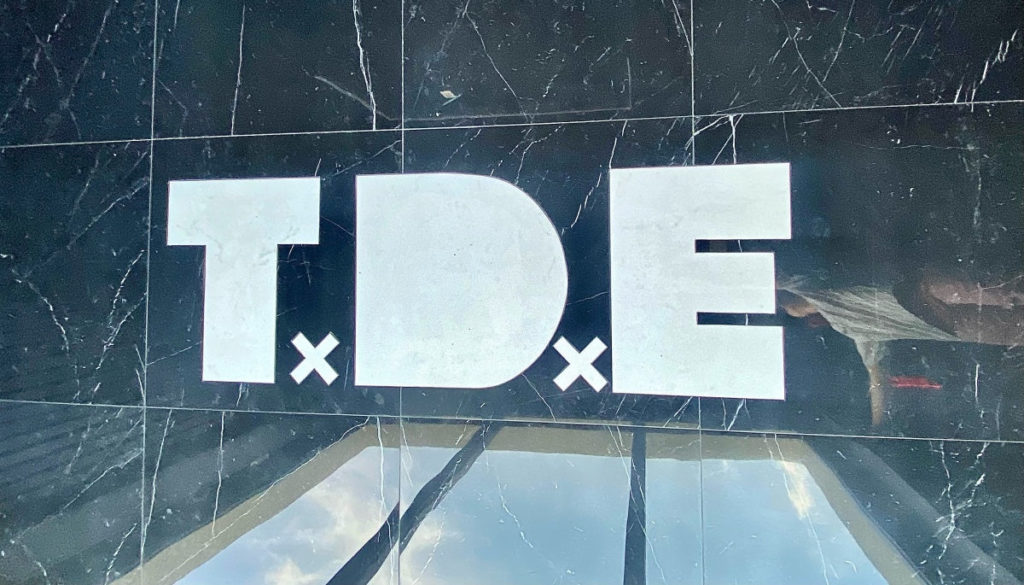
During the NAMM Show, Dave Malekpour will be hosting an AES Academy session on Saturday, June 4th, between 4.15pm – 5.30pm, in Room 202B, providing an in-depth look at the design, construction and completion of Top Dawg Entertainment’s new studios. Panelists include Keaton Smith, General Manager of Top Dawg Entertainment, Summer Walker of You’re Safe Here interior design, Yuriy Sogomonov of TE Builders, Michael Bashkhangy, the architectural designer for Malekpour Design Partners, and Luis Valdez of Jocavi Acoustics.
The session will see the panelists review the project from concept to completion, in what is set to be an insightful and educational discussion.
Carl Cox: “As far as I’m concerned, my studio has the best speaker system in the world”

The name Carl Cox needs little introduction to dance music aficionados. A veteran of acid house and techno, he’s become one of the most celebrated DJs on the planet, nurturing the club scene with relentless enthusiasm.
A founding father of the emerging British rave scene, Cox’s F.A.C.T. mix CDs were hugely influential in the mid-’90s, followed by releases on his own Intec and Intec Digital labels, which seeded success for dozens more artists. However, his pioneering career has not been all plain sailing. Disillusioned by the process leading to the release of his 2011 album All Roads Lead To The Dancefloor, Cox swore it would be his last.
That all changed when he acquired a Pioneer DJM-V10 6-channel mixer, which allowed Cox to record and remodel stems culled from his hybrid live performances. Captivated by his improvised jams, his passion for music making was instantly renewed, leading to the swift release of his latest studio album Electronic Generations.
It’s been 11 years since your last album All Roads Lead To The Dancefloor. What were the reasons for such a lengthy recording break?
“When I made that album I was using other people’s studios, but I was never comfortable doing that because the sound, the environment or my head never seemed to be in the right place. I’d write a track and then I’d think to myself, what do I do next, breakbeat, acid, folk? I was fighting to make every single track and an album in its entirety.
“I stand behind everything I’ve done, but when I was sitting in a studio that wasn’t mine with two producers who I love dearly but had different ideas about how the music should come out, it was quite an arduous task because I wasn’t getting hands on with the gear. With All Roads Lead To The Dancefloor, I wore my heart on my sleeve and used a lot of vocalists, percussionist and guitarists from Melbourne.
“My only regret was that it was put out independently, so the time, money, ideas, concepts and marketing fell down to myself and Jon [Rundell] who was running Intec Records for me at the time. We had this clever idea to put the album out on a USB stick too, but it took a year to make and cost me a fortune.”
You took the album out live too. Did that go to plan?
“I said to myself that the only way to really sell the album was to go out live, so I did two live shows in Australia, which were really good, but gathering everybody together was like herding cats [laughs]. Going out as a DJ was a foregone conclusion, but going out as a live artist is another story completely – it was difficult to roll it out and sell it as a live album.
“When I signed to BMG 30 years ago, I went out as a live artist and had a really great time doing those shows, but it took a lot of time to put them together and DJ at the same time. It’s much easier to play live now, especially in terms of all the equipment you have to take out with you, but I got to the end of that album and said to myself, that’s it – I’m not doing any more. In the end, I built a studio just to do club tracks and remixes.”
What brought you back to recording music again?
“During the pandemic I turned the studio into a live streaming room. All the machines that you see here were in separates and I thought, I’ve got plenty of time on my hands so why don’t I just chuck all this stuff together and see what happens. I started experimenting – what if I buy that module or what will it sound like if I plug this into that drum machine? Instantly I was making music with no pressure whatsoever.
“After putting all the machines together, I was asked to do live streams for certain festivals that I couldn’t physically be at. Movement Detroit was the first one but I told them that I didn’t want to DJ; I wanted to play my machines and go live with music that nobody’s ever heard before. They said, sounds like a good idea and you’re Carl Cox, so why not? So I put all the gear together and did a few rehearsals behind closed doors.”
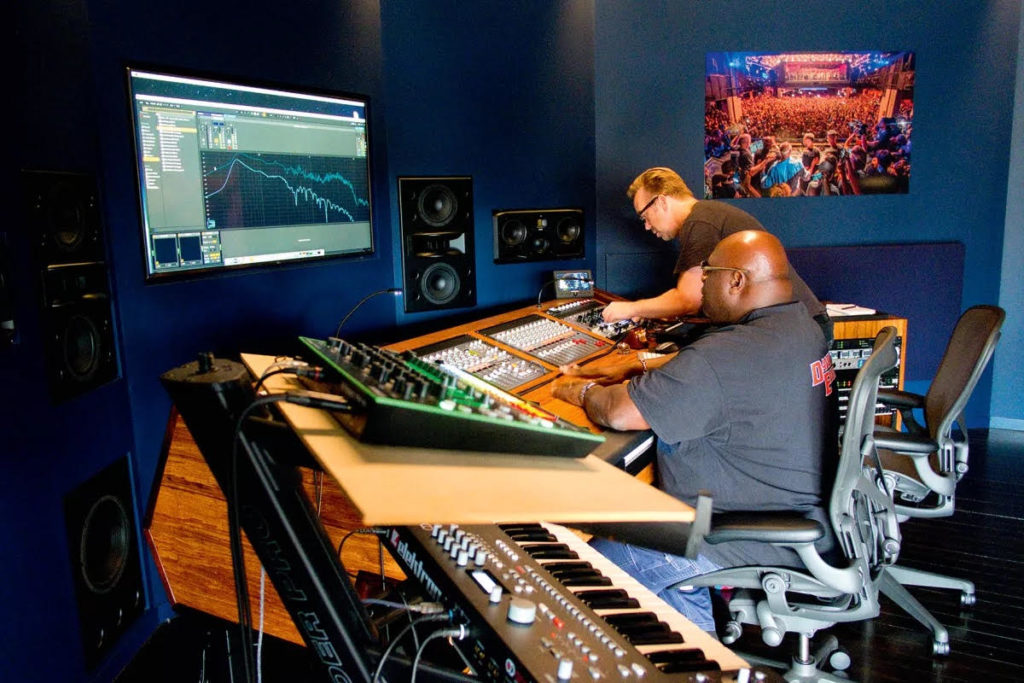
How did that process turn into what we hear on your new album, Electronic Generations?
“One of the reasons why this album came about is because I was using a Pioneer mixer called a DJM-V10. It came out just before the pandemic and after I’d used the beta version I told everyone that this mixer was going to be a game changer. People laughed at me because there are millions of mixers on the planet and I’d obviously got paid to say that, but I’d been working with Richie Hawtin’s Model 1 mixer, which is great, and there are a few things that it can’t do. One of those is recording live stems for each channel via MIDI.
“I thought to myself, if I’m running all of my machines through the V10’s 6-channel mixer and can record everything that I’m doing as stems, that’s a game changer because I’m jamming and rocking the hell out of these machines and adding certain elements to my music that I never would have thought of sitting in front of a computer. Once I’d done a mix, I could go back, remove the top and the tail of it and turn it into a track. That’s something I’d never done before.”
Did you have any technical problems recording the live sets?
“Sometimes the MIDI drops out, which makes things interesting. To be honest, you have to expect the unexpected. If it does fall over, great – it’s live, we’ll be back in a minute – does anyone know any songs? My fall back is that I have a second computer and a DJ setup if need be, so I can still provide a show. But there’s no pressure on the computer’s CPU whatsoever, so unless someone spills a beer on it I can more or less guarantee that we’ll get through a two or three-hour show.”
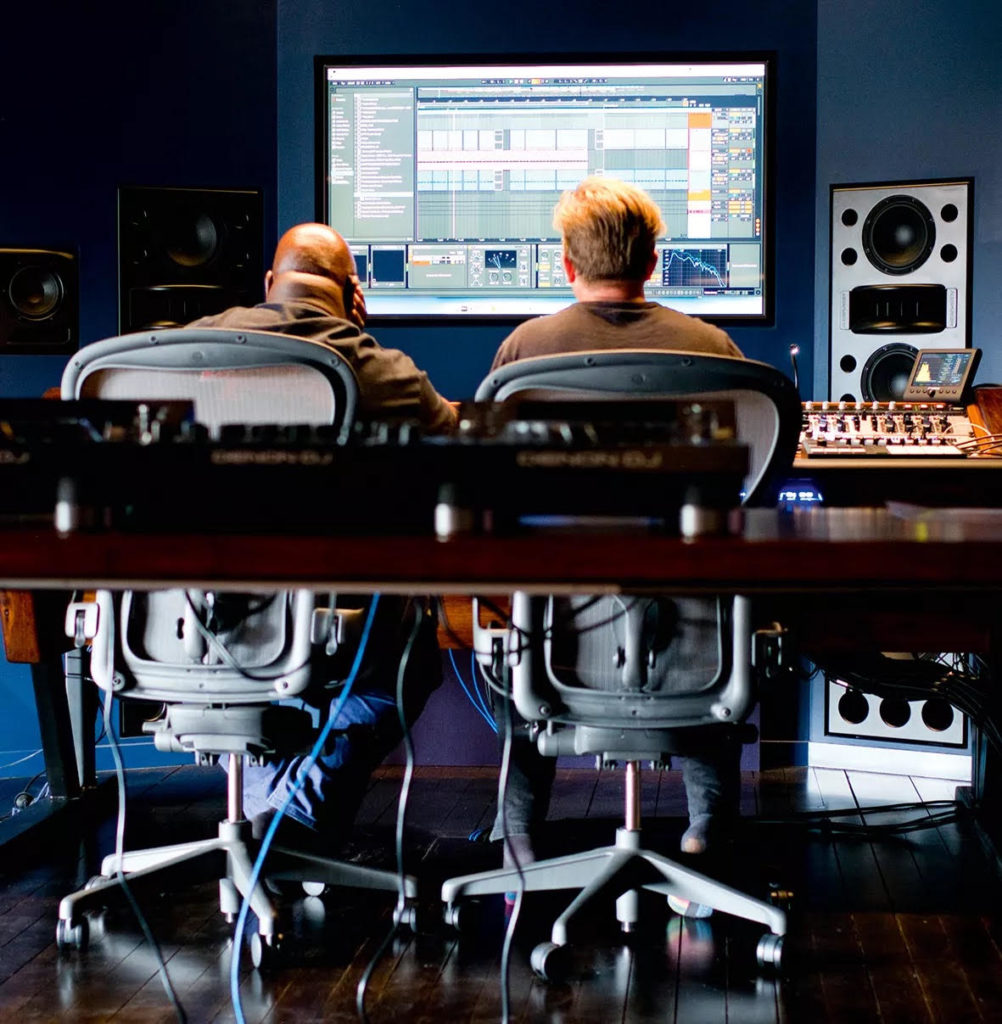
How inspiring was it to stumble on a new way to make tracks?
“Sitting in front of a computer with nothing going on and creating a bassline or a drum pattern is nice, but it’s just nice. When you’re playing live, there’s nothing nice about it – it’s coming out raw and you’re not thinking about anything other than what you’re creating at that particular moment. For me, jamming out my wildest techno fantasies and finding out what I could get out of these machines was really exciting.
“Even if it’s not making sense, you just stem everything out, take out what you don’t need and put in what’s missing. When you start working with these machines, after a while they start working for you. There’s a synergy and then the machines give you what you’re looking for and then some. I’d never have been able to sit there and programme any of it because I wouldn’t get any happy accidents. Thanks to the V10, this is the only way that I was able to come back and make an album, and now the whole studio makes more sense to me.”
Can you tell us about some of the machines used in your live setup?
“Equipment-wise, the Moog Subharmonicon is an amazing machine to have – although trying to control it is another story. I have a love/hate relationship with it. It’s such an amazing, powerful piece of kit that you have to try and capture those moments where its weird sharp keys end up. The sound moves around a lot, so you have to try and catch those oscillations because it’s hard to make sense of that while the pattern is being driven. On the one hand you’re fighting against the Subharmonicon, but it allows you to be more creative than you’ve ever been – it’s like a wild bull, but it’s responsible for a lot of the weird, spacey stuff on the album.
“The Moog DFAM (Drummer from Another Mother) is my go-to shuffle drum machine and is just brilliant, and I used a Korg Monologue on most of the tracks. A friend of mine told me that I needed to get one of them in the studio because it’s got some really good presets, you can write basslines on the fly and it’s small, so I bought the machine and thought, wow, it’s pretty powerful.
“The presets have a lot of really good analogue LFO movement and you can obviously manipulate those and do variances on the LFOs live. A lot of the top lines on the album are from that machine and it sits right at the front of my
live set.”
Is it true that you dusted some old gear down from your garage too?
“I had boxes of stuff that people had sent me – a TR-8 here and a Pioneer DJS-1000 there, so I was just pulling stuff out and hooking it up to see what it did. If I didn’t understand something I’d go online and look at tutorials. Most of the first part of the album comes from the DJS-1000 sampler. All I did was sit down and work on it for a week; then once I had a bunch of tracks I used it as a master controller and daisy-chained everything from there.
“I love hardware because software doesn’t translate live. For me, it’s not a live show until you can move, play and physically hit something – it’s the only way I can show that I‘ve gone from DJing to being a live recording artist that can perform live.”
How did the demo process take shape?
“I did another show for Mystery Man, one for our own label and certain shows for charity and I just found myself making all of this music – about four albums’ worth of mad tracks. Out of those live recordings I just sat down and, within a day, had about 18 tracks to work on. I demoed all the tracks and a couple of friends of mine told me send them to labels, but I didn’t think they’d be interested in someone who’s been around for eons making music out of all these machines because it’s not studio-based-sounding music and it’s not for the dancefloor, festival or clubs, it’s just raw electronic music coming out of these machines based on what I’d created.
“Thankfully, BMG’s Matt King decided to get back to me as soon as he heard it and said that’s exactly what we want to hear Mr Cox and we want you to sign a three album deal. I thought, if someone had told me that 30 years ago I’d be rich [laughs]. It’s unbelievable really because I’d always made music to suit the industry, but this album was the complete opposite; I was jamming my arse off for no other reason than having fun. They asked when I could finish the album off and I said, sometime next week – it’s done.”
Were the tracks really completed that quickly?
“The process of making the music was really quick, but the clever bit was getting the tracks to make sense. When you’re playing live, things come in on the threes, the ones and the twos – and some of the sounds were so improvised that a lot of the music is around the beats but not on it, so there was no real structure. When you work on a computer, everything’s so structured, but this music didn’t comply – sounds just came in when they felt right, but thanks to the process they at least had energy, soul, groove and power.”
The process sounds not so dissimilar to making house and techno tracks back in the day…
“Most of the acid house and techno music I was buying at the beginning was made on that basis. There was no Ableton Live or any of the amazing software we have now – there was no computer powerful enough to run those things. Back then it was like, woo, I’ve got a 4MB computer, this is great! You’d use a plugin and it would fall over.
“Most of what was recorded went onto a two-track tape and was spliced together and some of those records became seminal. Nobody could follow or copy those tracks because of how they were laid down. If you think of a track like Derrick May’s Strings Of Life, it was simple really, but genius at the same time.”
Once you’d sourced enough material for demos, how much more work did you need to do to turn them into fully-formed tracks?
“Not much at all. Each track that I jammed had its own element to it. When I moved away from the last track that I‘d jammed, I’d use a different module, drum machine or sample, so each track had its own flavour, whether that’s electro, hard techno, house, deep house or just electronica.
“The ebb and flow of the music was purely based on where I was going next. One track would be two minutes long and the next might be seven. I didn’t take any elements from one track and add it to another – that wouldn’t work because of the variation in key changes. Within each jam, there were obviously elements that might not have worked as well, but I’d either fix them or leave them as they were.”
Were you surprised at how gritty the record turned out?
“It did kind of surprise me in a way. If you listen to my F.A.C.T. albums, there are a lot of beautifully crafted trance records on there, like Cygnus X’s The Orange Theme, which is one of the most emotional records I’ve ever stood behind. I love that emotion and musicality because it’s not just attached to hard beats and the industrial sound.”
There’s 303 all over the record and that sound’s probably not as prevalent in dance music as it used to be. Do you feel it’s coming back into fashion?
“You’re right, but it’s one of those machines that’s always been associated with hard techno. I put it to the forefront because of my early days of acid house when you couldn’t play an acid record without it. We probably moved away from it because modern DJs never went to raves and haven’t heard the sound. Now when they hear it, they’re buzzing and sales of TB-303s are going through the roof.
“It doesn’t have to be a predominant sound, but it’s great as an embodiment of a low-end sound that can be put in-between basslines and percussion. For me, it harks back to the old-school days; it’s what got you off your feet. I’ve got the obligatory TR-8 drum machine, a TB-3 and it’s all running through MIDI, which is lovely. There’s no delay at all, it’s all running smack on time.”
How do you manipulate the 303?
“I manipulate the sound by putting patterns through a Moogerfooger then moving the frequencies around to make the 303 sound even bigger. By bolstering the sound and giving it a punk edge, I like to think that I’ve created a go-to Carl Cox 303 sound on two or three tracks on the album.”
You’ve also switched to Ableton as your main DAW…
“I only use Ableton Live. I’ve used Logic in the past, but found that I became quite rigid using that and the amount of parameters you have to go through becomes overbearing. Some people are geniuses on Logic, but I don’t have time for all that. Ableton wasn’t that great at the beginning from a sound processing point of view, so I’d just import all the files into Pro Tools, but I found that Pro Tools was going a bit too corporate so I switched back to Ableton and just got better and better at using it.”
Obviously, the process behind the making of this album was unintentional. Does knowing that your live shows are going to be committed to a recording suddenly introduce an element of pressure?
“I’ve got to think punk about all of this. They went in with an ‘I don’t give a shit, fuck you, bollocks’ kind of attitude. None of it was in key, they didn’t give a shit and didn’t even want to do it, but people loved it and they sold a million albums. How does that work [laughs]?
“For many years my music’s been accommodated: ‘Oh, that’s nice Carl, it’s a lovely track – I’m sure it’ll do well for you’, but with this album I really didn’t care. The rave scene was built on that energy – the whole jungle movement and breakbeat, The Prodigy’s Smack My Bitch Up wasn’t radio but boom, bang, and it’s a No 1 global tune. We need some of that to come back and it’s based on people’s attitude to making music.
“My music’s never really sat well with others. Even in the rave days I took it up to gabba, which is 180bpm. It wasn’t that I was angry or anything, but it was going somewhere until it wasn’t anymore. But my attitude was always punk – if I’m playing house, it’s the edge of house music, and the same with techno.”
There is a second version of the album on the way…
“The original album is literally Carl Cox’s Electronic Generations with 17 tracks and no guests, but I’m going to let them put out a reimagined version of those original tracks that allows certain artists to do something conceptual with the music. Fatboy Slim was the first and there are other tracks featuring Franky Wah, Nicole Moudaber, Juan Atkins, and Wilkinson. We’re nearly there with that, but it won’t come out until the original album’s been released.”
You have two studios, in Brighton and Australia?
“I built a fully-fledged professional recording studio in my old house in Horsham, which allowed me to do everything including mastering, but I never used it as much as I would have liked and felt uncomfortable recording at other people’s studios because it’s too stressful working against the clock. Eventually, I built a professional studio in Melbourne and when I walk in there now it feels like the best recording studio on the planet. Christopher Coe’s my right-hand man, an artist in his own right and a partner in my ASW label too.”
What speaker system are you using?
“As far as I’m concerned, my studio has the best speaker system in the world. I’m using Augspurgers® speakers, which have incredible power and energy, and ADAM Audio S3X-H monitors that give a rich, low-end feel to the sound. What you can’t see is the Funktion-One sound system.
“We have these fucking great big mid-height TM monitors and on the floor is a big 24” sub bass cabinet. I’ll take my remote monitoring system, go to the back of the room and switch between the ADAMs and the Augspurgers®, but when I want real world I’ll go to the Funktion-Ones, which sound unbelievable. It’s overkill, but if we hear any problems, I’ll rebalance the mix and boom - we’ve got it in the pocket!”
You sound totally enthused now…
“I’ve found myself in a very productive and creative place. For me, it’s necessary to go out there and show the people why I do what I do and if I didn’t love it we wouldn’t be having this conversation. This is my answer to entertaining the troops and the people who love electronic dance music. I’m excited to get back out there to my happy place – here’s a kick drum, we’re going to go somewhere from here and there’s no holding back!
“My DJ career is one great story but I think people know who I am as a DJ now and what I can do to any dancefloor. The live shows are unknown territory for me, but they’re also the tip of the iceberg because there’s a lot more to come. I could rest on my laurels as a DJ, but I still want to work for it and for people to understand that there’s no point companies making these machines and nobody using them. We’ve got plenty of DJs now; what we don’t have is a lot of electronic live artists that want to go out and perform, so hopefully I can be part of that new movement.”
Carl Cox's choice gear...
CCX Bus Compressor
“Made by the genius Arjan Hebly, it’s the hardest working piece of kit I own.”
Manley Massive Passive EQ
“A classic unit with such characterful EQ and power. It was this or two Pultecs...”
Zähl EQ 1
“Used on everything. For a master buss chain it gives us more air and better bass extension and clarity across the mix.”
Moog Mother-32
“Ah, the joy of this synth. Moog was so kind to give me this as a gift.”
Roland TR-8
“I use it all the time for my live shows.”
Make Noise Shared System
“I’ve had many sleepless nights trying to figure out the magic behind these amazing, weird boxes.”
SOMA Pulsar-23
“Joseph Capriati gave it to me for my birthday. I’ve never seen or heard a drum machine like it.”
Erica Synths LXR-02
“Proper techno comes out of this box as soon as you switch it on.”
Pioneer V10 Mixer
“My go-to mixer now; I can record the stems of my live show straight into Ableton.”
DOCtron IMC
“Master chain unit that I use on the final output of my live kit. An EQ, compressor and saturation box. It lifts everything.”
